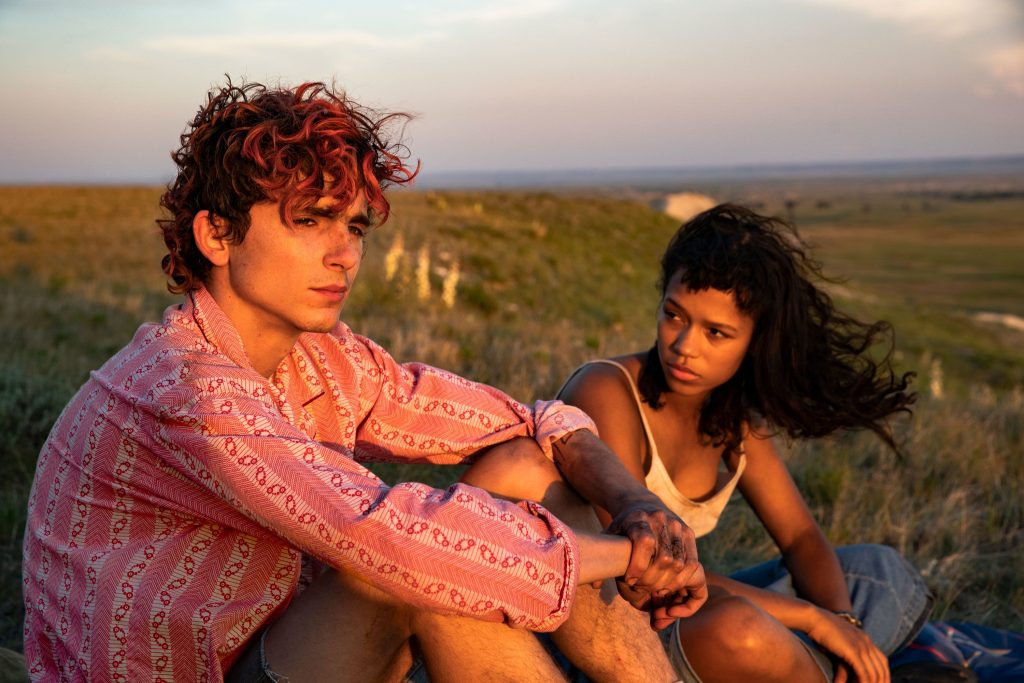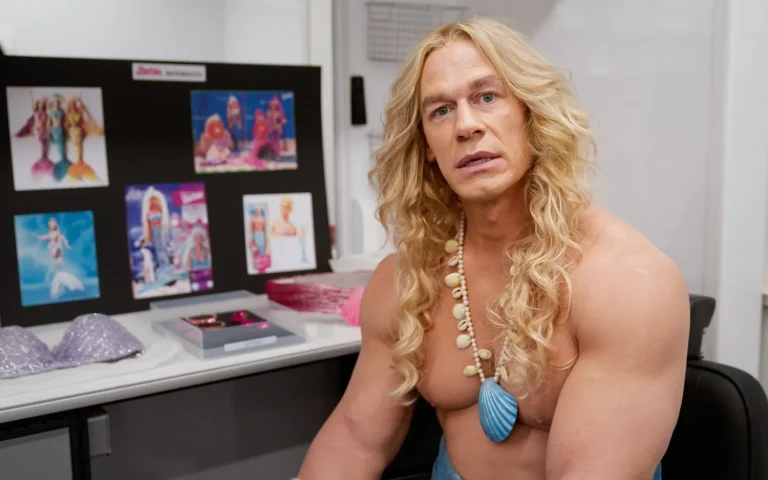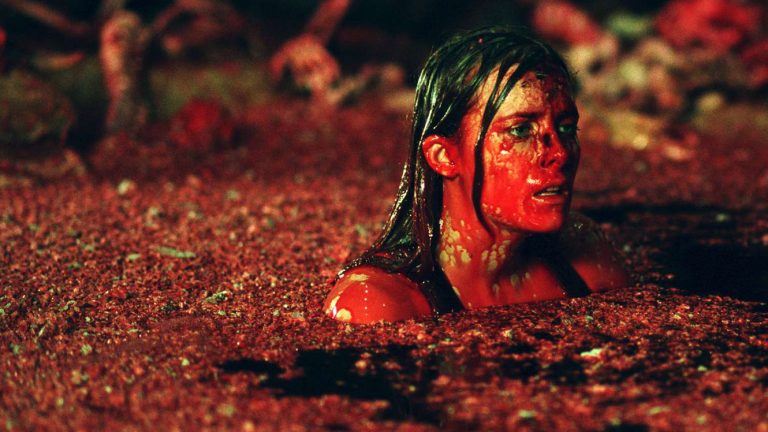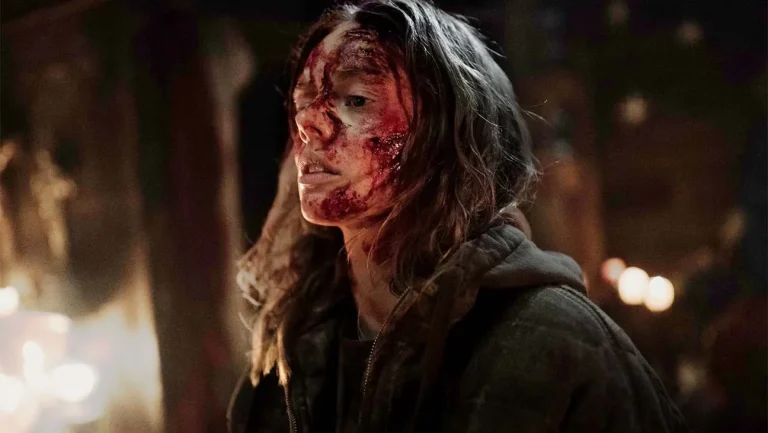Bones And All (2022) Review: The Americana of the 70s and 80s has provided plenty of filmmakers over the years to explore a bunch of allegorical themes. After all, this was the period where inhospitality towards the ‘other’ grew at its peak, bolstered by the conservative leaders of the time. Most of these films found a strong footing either in the western or the road-trip genre. But more often than, the very ideas and styles the setting posed gave birth to a new hybrid of genres. The one that comes to mind instantly is Terrence Malick’s brilliant directorial debut, “Badlands.” However, while one could certainly look at director Luca Guadagnino’s latest film and find a similar style perpetrating through its moody autumnal palette, “Bones And All” feels nothing quite as extraordinary as some of the films that defined the era.
The movie opens with shots of wide open landscapes – paintings that exist outside of the walls of our young protagonist’s high school, thus, illustrating how these fertile renditions are mere interpretations of the more complex and often grisly reality. We meet Maren (a stunning Taylor Russell), who finds herself on her own as her father runs away after an incident that unlocks his old dormant concerns. As she turns 18, Maren leaves her house with only a bag and a tape recounting her earliest episodes of cannibalism that her father had recorded. Soon, she comes across a random old stranger drifting around the dark streets of Kentucky, claiming to help her out. The middle-aged drifter named Sully (a spooky Mark Rylance) teaches her how to sniff out other eaters while showing her how he braids his own rope out of the hair of his prey.
Gradually, Maren – now out in the open world – learns that her desire for human meat is deeply innate. The notion is reaffirmed when she comes across Lee (Timothée Chalamet), an orange-haired guy whom she smells and soon befriends. Lee is someone who kills without remorse, and he tries to explain to Maren how this is actually an unexplainable trait people like them cannot change. The two heartthrobs at the center fall in love while they venture onto the untethered remnants of their previous lives. From that point on, photographic evidence of a person’s past life becomes a strong motif as the movie goes on to juxtapose them during some of the grossest scenes put into any film all year. These snippets of random perpetrators across the countryside act as stark reminders of the many facets a single individual can contain. Amidst all of this, will our central couple’s love survive their differences?
Based on Camille DeAngelis’ bestseller book, the movie serves as a genre hybrid tale that’s foremost a story about first love being born out of an addiction stronger than any drug. The three acts are joined with the convenience of the film posing as a road-trip story, while the coming-of-age aspect of the screenplay forms the emotional core. And, of course, there’s cannibalism sprinkled throughout that, at least, attempts at posing allegorical ideas about identity and ostracism. One thing that Guadagnino does really well is that he maintains just the right amount of sensitivity and tenderness, even during some of the most ‘campy’ graphic scenes of violence. This is largely credited to the way he structures the movie, which constantly keeps evolving as you watch it. It’s a shame then that even by the end of it, I kept asking myself how much of it should be taken seriously or at face value.
Much of 2017’s “Call Me By Your Name” drove its mileage out of its mood building, which was rendered beautifully through the dreamy editing by Walter Fasano. This time around, cinematographer Arseni Khachaturan and film editor Marco Costa blend similar visuals with an editing style that is both dreamy as it feels harsh. The journey of the story winds all the way from Virginia to Minnesota and beyond, covering the picturesque spots of Maryland, Ohio, and Kentucky. Technically, it’s all rendered powerfully to the screen. By adding the filmmaker’s usual touch, the overarching journey our characters take feels at once philosophical and sensual. At the same time, the visual dichotomy makes the encounters on screen feel gross and graceful all at once. In doing so, “Bones And All” raises a quandary of how the growing fondness towards someone can make you consume them. The more you think about it, the more the film’s overall vibe ticks with you, thus, making you see what truly makes these mid-western places feel so isolated.
“Why do you say your name like you’re two different people,” asks Maren to Sully at one point in the film upon noticing how the latter endlessly keeps following her everywhere. Oblivious yet fully comprehending the consequences of her being the ‘other’ one, Maren doesn’t quite know that he is, indeed, two different people masquerading as one, luring everyone in buying into mellifluous voice coated by a thick Southern accent; Sully quite literally is the aging predator who can only feed on those who are dying. The film’s set during the Reagan administration when masses of American society brutally fostered homophobic self-loathing. Although the makers never address any of the underlying metaphorical themes directly, the choice of swinging at two extreme tonal disparities could leave a lot of the viewers hungry, asking for more. The director does lean towards the notable influences from the past but also leaves the film vulnerable to the very disparities the meshing of multiple genres could often collapse into.



![The Wailing [2016] : Bengaluru International Film Festival [BIFFES]](https://79468c92.delivery.rocketcdn.me/wp-content/uploads/2016/07/wailingshaman-768x512.jpg)



